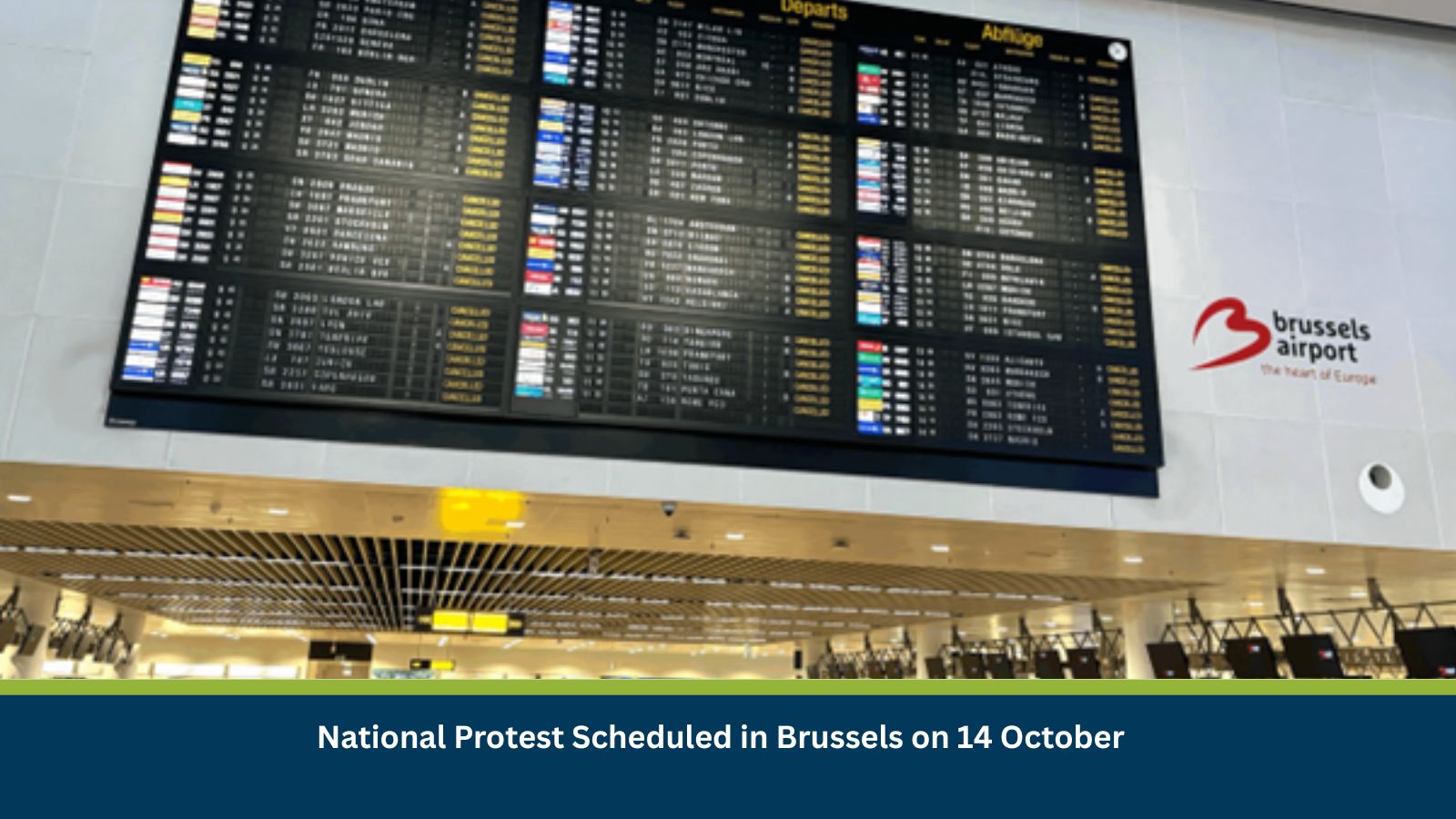What is Risk Analysis in the Context of Civil Disturbance Events
Civil disturbance risk analysis evaluates how strikes and mass demonstrations affect public order, transport systems, and business continuity. In Brussels, national actions typically create single-day, high-impact shocks to mobility and services, with residual effects into the following morning, necessitating structured preparedness and rapid incident coordination.
Executive Summary
- Date of Incident: 14 October 2025
- Location: Brussels, Belgium
- Risk Category: Civil Disturbance
- Severity Score: 4/5
- Confidence Level: 90%
A large national protest is expected to cause severe disruption across the capital. Historical patterns indicate extensive public transport cancellations, major road closures, and commuter delays within a 24-hour window, with spillover impacts into early 15 October. While fatalities are rare, minor injuries from crowd movement or isolated incidents are plausible.
Current Updates
Unions and collectives have called a “monstre” demonstration in Brussels on Tuesday, with very high turnout anticipated. Significant disruption is expected across STIB services, SNCB rail, and core road corridors, with concentrated impacts in central districts.
Known Hotspots and Sensitive Areas
- High impact: European Quarter (Rond-Point Schuman), Rue de la Loi/Avenue des Arts, areas around Federal Parliament and Royal Palace, Brussels-Midi/Central/North.
- Medium impact: Rue Neuve, Avenue Louise, inner ring tunnels/approaches.
- Low impact: Peripheral communes; indirect congestion from diversions. Pattern: single-day national actions with morning build-up and evening dispersal.
Impact on Transportation and Services
Expect reduced or suspended metro, tram, and bus operations; constrained national rail through city hubs; and heavy road congestion on central axes and approaches. Air travel access may be slower due to surface disruption. Businesses may face absenteeism, delayed appointments, and last-mile delivery slippage.
Recommended Actions
- Enable remote work for non-critical roles; issue staff advisories with safe route maps and site access controls.
- Re-time shipments; pre-position inventory; reroute service calls outside protest corridors; reschedule client meetings or switch to virtual.
- Harden entry controls; restrict non-essential visitors; designate shelter-in-place rooms; brief on de-escalation and reporting.
- Activate BCP; publish client notices on service levels and alternatives; maintain real-time internal updates across HR, Security, and Operations.
Multidimensional Impact
The scheduled national protest on 14 in Brussels will significantly interact with several ongoing or concurrently scheduled non-related events:
- Flights on the Sofia – Brussels route canceled today due to strike actions at the Belgian airport: The protest may exacerbate or extend disruptions to air travel, particularly if protest-related absenteeism or solidarity strikes impact airport personnel or ground operations, potentially causing further flight cancellations beyond existing strike-related issues.
- Brussels Metro Train Delay Causes Mounting Impatience Among Commuters: The protest will inevitably lead to widespread and severe disruptions to the Brussels Metro, rendering pre-existing delays minor by comparison. This will significantly increase commuter frustration and reliance on already congested alternative transport methods.
- Reconstruction work scheduled on La Louviere Bridge on Tuesday (14 October): While La Louvière is outside Brussels, workers traveling from or through Brussels to the site might face severe delays or be unable to reach their workplaces due to transport disruptions in the capital, potentially impacting the scheduled start or progress of the reconstruction work on the same day.
- Annie Cordy, Botanique, and Rogier tunnels reopened, public transport disrupted: The ongoing public transport disruptions mentioned in this event will be drastically worsened by the national protest, as metro, tram, and bus services through these areas are likely to be heavily curtailed or cease entirely. Traffic flow in and around these tunnels will also be heavily impacted by protest-related road closures and diversions, negating the positive impact of their reopening for non-protest traffic. Additionally, ‘New Chestnut Tree Cuts Planned on Tervuren Road in Waterloo’ will likely not be affected given its location outside the primary protest zone and a different timeline (All Saints’ Holidays vs. Oct 14). The cancellation of ‘Delta Air Lines New York to Brussels route’ is a long-term commercial decision unrelated to a single-day protest.
Emergency Contacts
- Police: 101
- Fire/Ambulance: 112
- National Emergency: 112
Final Thoughts
The trajectory indicates a high-impact but short-duration disruption, with peak disturbances expected during morning and late-afternoon hours and limited residual effects the following day. Key watchpoints include traffic congestion in the European Quarter, crowding at major stations, bottlenecks near tunnel approaches, and delays during evening dispersal. Organizations should prioritize personnel safety, maintain flexible staffing plans, and ensure transparent communication with clients. Stay ahead of operational risks with real-time alerts, scenario modeling, and expert advisories with datasurfr’s Predict. Start your 14-day free trial of Datasurfr’s Risk Intelligence Platform today.






